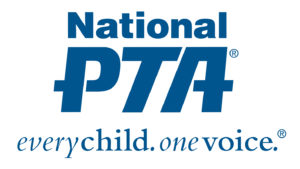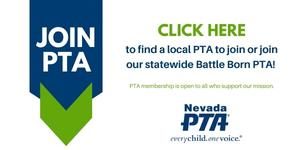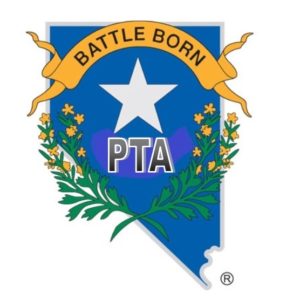The Basics
Board leadership is a commitment. Board members are stewards of their association and hold a public trust to work together as a single legal entity—the board of directors/managers—to conduct PTA’s business between general membership meetings. Boards can delegate authority to committees to get work done, but boards are ultimately responsible for the actions of their association.
Why are boards important?
- They are required by law to ensure PTA carries out its mission.
- They hold a position of trust and have “fiduciary” responsibilities to their members.
- They are given power to run the association by the membership via bylaws and elections.
- Boards of directors are ultimately responsible for the viability, credibility, and effectiveness of their PTA.
- Boards function as a team. The team succeeds and achieves its goals, or the team fails and is ineffective. Conflicts may arise among team members, and it is up to the team as a whole to address the conflict, seek professional assistance if necessary, and create the proper environment for success.
Removal of board members should be used as a last resort, especially removal of individuals elected by membership. Because PTA belongs to its members who run the association through elections and bylaw approval, boards of directors must avoid subverting members’ intent. Board members do not have to like each other to be effective as a team; boards simply must learn to work with each other.
Remember: Your PTA is an independent entity: a constituent association of Nevada PTA but a separately-functioning association. Your PTA’s board of directors—not Nevada PTA–is responsible for the success or failure of your association. Nevada PTA’s involvement is limited by the Nevada PTA Bylaws approved by our members, by the associated Standards of Affiliation Policy, and by 501c3 group exemptions.
Fiduciary Responsibility
Board fiduciary responsibilities are recognized in state laws. These responsibilities are: care, obedience, and loyalty. Board members are expected to know how these responsibilities apply to them as individuals and as members of the board.
Duty of Care, expectations of board members:
- First and foremost, board members do no harm.
- They protect PTA assets, the most valuable of which are PTA’s name and reputation.
- Board members follow the “Prudent Person Rule”– what would a prudent person do in this situation? Ask in this situation? Say?
- Board members advocate for and participate in their PTA’s work.
- Board members act in good faith using their best judgement and basing decisions and actions on what is in the best interest of PTA.
- Board members attend meetings, participate, educate themselves on issues, research, discuss, and stay informed.
Duty of Obedience, expectations of board members:
- Board members know and obey applicable state and federal laws.
- Board members follow PTA bylaws as approved by members. and associated standing rules and policies.
- Board members do not create standing rules and policies that are more restrictive than bylaws.
- Board members follow the applicable sections of the Nevada PTA Bylaws, and keep their association in good standing by abiding by Nevada PTA’s Standards of Continued Affiliation Policy.
- Board members are faithful to PTA’s mission, using the mission as the foundation to rule and decision-making.
Duty of Loyalty, expectation of board members:
- When making PTA decisions, board members place their PTA’s interests over those of family, personal, and friends.
- Board members maintain confidentiality about sensitive PTA issues and information, allow a safe atmosphere for boards to make decisions, and avoid sharing information that could harm PTA’s assets and reputation.
- Board members disclose all potential conflicts of interest and do not personally gain from board participation. They ensure their PTA has a Conflict of Interest Policy.
These fiduciary responsibilities correlate to basic responsibilities for a nonprofit board. The following paragraphs provide the basic responsibilities of nonprofit boards along with questions you may want to consider when assessing your board’s actions and effectiveness in fulfilling PTA’s mission and your board’s fiduciary responsibilities.
Basic Board Responsibilities:
1. Follow the mission and values of PTA.
- Decisions are made based on PTA mission and purposes.
- Boards advocate on behalf of PTA’s mission.
- Boards sets goals in order to achieve the mission.
- Boards create plans and job descriptions that align with PTA mission achievement.
Does our board and membership know the PTA mission?
Does mission drive the work my board does?
Is every board member prepared to advocate for PTA’s mission?
2. Ensure effective planning:
- Set long- and short-term goals and create a plan for the year.
- Board agrees on outcomes and holds the board accountable to achieve those outcomes.
- Board assesses forward progress, monitors plans and makes necessary adjustments.
- Board looks at the big picture and plans for future.
Is at least one of our meetings used for planning each year?
Do we all agree on the same definition of success?
Do we invite all stakeholders to the conversation to ensure we meet the goals of diversity, equity, and inclusion?
Do we consider the financial and time needs of our members as we plan?
3. Ensure adequate resources:
- Boards ensure adequate “people” resources—professional consultants (if needed, attorney, accountant, parliamentarian) volunteers with a variety of skills and contacts, board members that ensure diversity of opinion and perspective.
- Boards ensure a reliable stream of financial resources by diversifying funding streams and easing reliance on membership dues.
- Board ensure influence by growing and diversifying your membership.
- Board ensure professional support to assist in governance and organizational compliance.
- Boards ensure all resources are used wisely on actions that get results.
Do we assess expenditures vs. outcomes?
Do we have a membership plan?
Do we have access to a professional attorney, parliamentarian and accountant?
4. Monitor and strengthen programs, events and services:
- Boards discuss and brainstorm ways to assess, improve and effectively deliver programming and services
- They poll/survey members/volunteers to evaluate needs and effectiveness of program.
- They monitor attendance and outcomes of events, and
- Evaluate the effectiveness of PTA’s current structure to provide service and meet needs.
- Boards evaluate programs and services on their impact on children and families and achieving the mission of PTA.
Do we set aside time to discuss and evaluate the work we do?
Do we ask our members what they want?
When was the last time we did away with a program, service or event?
When was the last time we added a new service, program or event?
5. Enhance PTA’s public image:
- Boards are aware of PTA’s public image—inside and outside of PTA– and clearly messages success, value and achievement.
- All board members are PTA ambassadors, speak positively of PTA, protect PTA’s image.
- All members know the association’s goals, mission, and successes.
- The greater community knows PTA, has a high opinion of PTA, and recognizes PTA as a trusted partner and successful association.
Using the National PTA logo and tagline creates credible and sustainable messaging for all PTA units, resulting in the organization working as one association with one voice.
Do our members and school community know what we do?
Do our members know the difference between a PTA or school sponsored event?
Are all board members able to clearly message PTA value?
Do we use all types of media to communicate with our members?
6. Ensure legal and ethical integrity:
- Board members are all aware of state and federal compliance requirements and diligently ensure compliance.
- Board acts transparently, providing accurate info about revenues, expenses, and function to government agencies and to members.
- Board holds itself accountable to mission/values, bylaws, Standards of Affiliation, and maintains the trusts of its members.
Do we have a Code of Ethics?
Do we hold each other accountable?
Does the entire board see and understand federal and state filings?
Do we have good financial oversight and standing rules?
7. Build a competent board:
Board understands board composition matters. Creates a welcoming environment that leads to a board with diverse skills, opinions, and perspectives.
Board has a recruitment policy and practices that seeks and grows new leaders to serve at the local, state, and national PTA levels, and engages the entire board in this process.
Board provides an orientation for new members and continuing education and development for all members.
Board regularly assesses its overall function and the function of individual board members.
- Board members hold each other accountable, and clear job descriptions and plans of work exist.
What skills does our board need to achieve the PTA mission now and in the future?
Do we assess our needs?
Do we prioritize board recruitment, orientation and diversity?
Do we submit our officer roster to Nevada PTA so that all of our officers can receive communications?
Do all of our designated officers receive required training each year? Nevada state PTA training requirements found here.
8. Protect PTA assets and provide financial oversight:
Board has budget approved by membership and follows bylaws requirements to amend.
Board receives and reviews regular financial reports and monitors budget expenditures.
Board ensures policies are in place to provide financial oversight
Board ensures adequate reserves are in place.
- Board minimizes unnecessary risk, is aware of potential liability, and properly insures.
Is everyone on the board able to read a financial report?
Are practices and policies in place to protect assets?
Do we keep accurate records of our members and send dues to Nevada PTA on a regular basis?
Have we uploaded all financial documents to Memberhub as required in the Standards of Affiliation?
Do we conduct annual financial review?
DUTIES OF YOUR PTA’S LEADERSHIP
One of the officers’ primary duties is to participate in leadership training programs offered by National PTA, Nevada PTA, region and council PTAs. Officers should prepare for the coming year by studying the PTA and how it operates. You will find a list of responsibilities for officers in your PTA’s bylaws. We suggest you review them right away.
One of the most important aspects of being an officer is to help build an effective, diverse PTA team; one that can get things done. The president leads not by dictating, but by working together with members, officers, chairpersons, principal, staff and community leaders to form an effective team focused on children.
To be successful, the leadership team should:
- Make every effort to ensure that your board is representative of the whole community. Work to retain experienced board members but also include individuals who may not have served on the board previously.
- Distribute materials promptly to your board and principal. You need to keep everyone informed.
- Meet early and regularly with the fellow leaders to plan and set goals you can reasonably achieve for the coming year. Build consensus and buy-in to your plans.
- Create a climate of support and mutual respect where people can contribute and grow, listen and try to understand fellow PTA members’ opinions. Use their suggestions. Identify and make use of members’ special interests or abilities.
- Share responsibility by letting others shoulder responsibility and asking everyone to train and encourage the leaders who will succeed them.
- Network with other community leaders, groups and agencies that share the goals of PTA. Follow National PTA and Nevada PTA on social media as well as joining the PTA Local Leaders group on Facebook.
- Reach out. The PTA team becomes stronger and is of greater service when it actively welcomes all groups in the community—young and old, single parents, dual-income families, families with diverse cultural and ethnic backgrounds, families with special-needs children and area businesses.
- Choose the time and location for PTA General Membership meetings to suit the schedules of as many families as possible, and announce them in multiple places like your PTA’s social media pages, school-wide apps, Memberhub, by email, school website, newsletters, school announcements, and flyers that go to each student.
- PTA membership is everyone’s priority. Make your electronic join links available in all communications.
- Utilize anyone in the community who can contribute their talents and skills to the PTA. There is no age limit on concern for children’s well-being. You don’t have to be a parent of a K-12 student to be a PTA member nor do you have to have a child attending that school.
- Bridge the language barrier. Find ways to reach out to people in their native language.
- Communicate with everyone regularly and often. And, don’t forget that communication is a two-way street. Listen to what people are saying both verbally and non-verbally and pay attention to their actions and inactions.
- Delegate to others. You should provide clear instructions and clarify your expectations. Provide adequate training and support. Follow up regularly.
- Find and train your replacement. Always be on the lookout for someone to serve in your position after your term is up.
For assistance please email leadership@nevadapta.org



